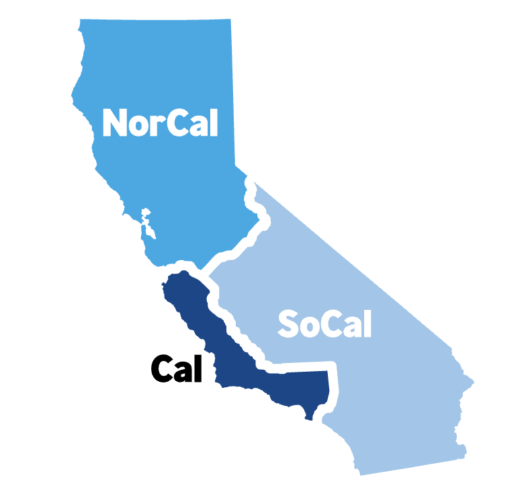Those are far from the only roadblocks that the initiative faces. The idea would first have to be approved by voters in November, and potentially by the state Senate and Assembly, although the U.S. Supreme Court has recognized initiative votes as a constitutional substitute for the legislature.
There’s also the issue of whether a major ‘revision’ to the state constitution can be initiated by voters.
But let’s say the measure remains on the ballot and is approved by voters. Would each of the newly created states then need to approve of their own existence?
That wasn’t a problem for the residents of early-19th century Maine, who felt the Massachusetts state government didn’t do enough to protect the area from the invading British during the War of 1812.
“The effect of actually having the government in Boston not defend the District of Maine in time of war really changed public perceptions in Maine,” said Colin Woodard, author of The Lobster Coast: Rebels, Rusticators & the Struggle for a Forgotten Frontier, a history of early Maine. “That culminated very quickly into a successful vote for statehood.”
The Cal 3 proponents are hoping for a similar sentiment from voters in California.
“All Californians deserve more from their state, and with Cal 3,
more regional responsiveness and more meaningful results will create a promising future for everyone,” initiative spokesperson Peggy Grande said in a statement on Tuesday, when the measure was approved to appear on the fall ballot.
A majority of Californians could approve the Cal 3 idea even if, for example, the residents of the new ‘Southern California’ (covering the Central Valley, the Inland Empire, and San Diego) vote against it.
To create a new state, Article IV of the U.S. Constitution requires “Consent of the Legislatures of the States concerned.” It’s an open question whether that includes the consent of the new states being formed.
“Arguably the legislative body of each of those new states might have to weigh in as well,” said Vikram Amar, Dean of the University of Illinois College of Law, who has been following Draper’s proposal.
If it makes its way through the legal minefield at the state level, the Cal 3 measure would head to Congress for approval.
In Congress, the effort to split California would be viewed through a national political lens.
That worked in Maine’s favor in 1820, when Congress used the bid for statehood to maintain the balance of free and slave states. The Missouri Compromise allowed the entrance of free-state Maine into the union, balanced with the creation of new slave-state Missouri.
“Maine presented a solution to a problem on the federal stage, whereas California splitting into three states wouldn’t,” said Woodard.
Republicans in Congress would likely be horrified by the idea of six senators coming from present-day California. Two Democrats would likely represent the proposed ‘Northern California’ (running from Santa Cruz to the Oregon border), joined by two more Democrats from the new ‘California,’ which would encompass the Central Coast and Los Angeles.
Hypothetical ‘Southern California’ is more politically split, but the possibility of six Democratic senators between the three states is not out of the question.
The bad news for Democrats is that the politically balanced ‘Southern California’ could go for a Republican presidential candidate. That would suddenly fracture the guaranteed 55 electoral votes that Democrats count on from the Golden State.
“The stakes in presidential elections are so high that I can’t imagine many Democrats being really enamored of this idea,” said Amar.
Amar added that there could be bipartisan concern that the entrance of the new states would dilute the voting power of all sitting Senators.
In 1820, Maine’s exit from Massachusetts was aided by a perfect storm of popular support and political opportunity. There’s a reason the feat hasn’t been repeated for nearly 200 years.

